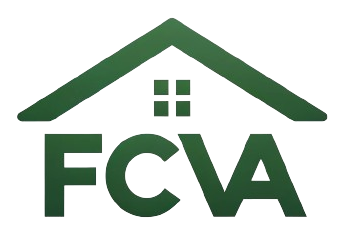Are you a property owner in the DC Metropolitan area looking to sell your house quickly, but feeling uncertain about how to navigate the slow market? Look no further! In this comprehensive guide, we will provide you with a step-by-step approach to achieve a swift and rewarding sale. Whether you’re facing tight timelines, financial duress, or simply seeking quick investment turnover, our ultimate 5-step guide will equip you with the knowledge and confidence required to successfully sell your house fast. From preparing your property for a quick sale to navigating legal and procedural aspects, we’ve got you covered. Join us as we delve into the world of fast property sales and discover the unique advantages offered by Fast Cash Virginia.
Step 1: Set the Right Price
When selling a house in a slow market, it is crucial to set the right price from the beginning. To determine the ideal listing price, it is important to research the local market. Look at recently sold properties in the area that are comparable to yours in terms of size, condition, location, and amenities. This will give you a good idea of the current market value of your home.
In addition to researching the local market, it is important to consider current market conditions. Is it a buyer’s market or a seller’s market? Are there a lot of similar properties for sale in your area? Understanding the market conditions will help you determine how to position your property and set a competitive listing price.
Consulting with a real estate agent is another crucial step in setting the right price for your home. A real estate agent will have a deep understanding of the local market and can provide valuable insights and guidance. They will analyze the market data, consider your home’s unique features and condition, and help you determine the right price that will attract potential buyers.
Setting a competitive listing price is essential in a slow market. If your house is priced too high, it may sit on the market for a long time without any offers. On the other hand, if you price it too low, you might miss out on potential profit. Finding the right balance is key.
Step 2: Stage Your Home for Maximum Appeal
To sell your house quickly in a slow market, it is important to make your home as appealing as possible to potential buyers. Staging your home can significantly enhance its marketability and help it stand out from the competition.
Start by focusing on curb appeal. First impressions matter, and the exterior of your home is the first thing potential buyers will see. Ensure that your lawn is well-maintained, the exterior is clean and in good condition, and consider adding some colorful flowers or plants to create an inviting atmosphere.
Inside your home, declutter and depersonalize the space. Remove any personal items such as family photos or unique decor that might make it difficult for prospective buyers to envision themselves living in the house. Keep the space clean, organized, and minimalist.
Make any necessary repairs before listing your home. Small things like leaky faucets or chipped paint can create a negative impression and give potential buyers the impression that the property is not well-maintained. Take the time to fix any issues and make sure everything is in proper working order.
Arrange your furniture in a way that highlights the space and functionality of each room. Create inviting seating areas and make sure there is a clear flow throughout the house. Consider staging with neutral and modern furniture to appeal to a wider range of potential buyers.
Step 3: Utilize Effective Marketing Strategies
In a slow market, effective marketing strategies are crucial to attract potential buyers to your listing. Utilize high-quality listing photos to showcase your home in the best possible light. Consider hiring a professional photographer who specializes in real estate photography to capture the beauty and unique features of your property.
Write a compelling property description that highlights the key selling points of your home. Mention any recent renovations or upgrades, and emphasize the benefits and amenities of the neighborhood. Use descriptive language to create a vivid picture in the minds of potential buyers.
Utilize online listing platforms to reach a wider audience. There are various websites and platforms specifically designed for real estate listings where you can showcase your home to interested buyers. Make sure to provide all relevant details, such as the number of bedrooms and bathrooms, square footage, and any special features or amenities.
Promote your listing through social media and word of mouth. Share your listing on your personal social media accounts and ask friends and family to share it as well. You never know who might be looking for a new home or who might know someone who is.
Step 4: Schedule Open Houses and Showings
Hosting regular open houses is a great way to attract potential buyers and showcase your home. Coordinate with your real estate agent to schedule open houses at convenient times for potential buyers to visit. Make sure the house is clean and well-prepared before each open house.
In addition to open houses, make the property easily accessible for showings. Be flexible with scheduling and try to accommodate potential buyers as much as possible. The easier it is for buyers to view your home, the more likely they are to make an offer.
Consider offering virtual tours or video walkthroughs of your home. This can be especially beneficial in a slow market, as it allows potential buyers to get a detailed look at your property without having to physically visit. Virtual tours can help generate interest and attract serious buyers.
Work closely with your real estate agent to coordinate showings and provide them with any necessary information or materials they may need. They will handle the logistics and ensure that potential buyers have all the information they need to make an informed decision.
Step 5: Negotiate and Close the Sale
When you receive offers, it is important to review and negotiate them carefully. Consider the terms and conditions of each offer, including the sale price, contingencies, and any additional requests. Work with your real estate agent to negotiate the best possible deal for you.
Be aware of any contingencies or conditions that may be included in the offer. For example, a buyer may request a home inspection or financing contingency. Consider these contingencies and determine if they are reasonable and feasible for you to fulfill.
It is highly recommended to work with a trusted real estate agent or attorney throughout the negotiation and closing process. They will ensure that all necessary paperwork and inspections are completed properly and guide you through the legal aspects of the sale.
Once all the negotiations are complete, review and sign all the necessary paperwork to officially close the sale. This will include legal documents, transfer of ownership, and any other required paperwork. Work closely with your real estate agent or attorney to ensure a smooth closing process.
Additional Tips and Considerations
Consider offering incentives to attract buyers, especially in a slow market. This could include covering closing costs, offering a home warranty, or including certain furnishings or appliances in the sale. These incentives can help make your listing more appealing and give you an advantage over other properties on the market.
Be flexible with negotiation and closing terms. In a slow market, it may be necessary to be more accommodating to potential buyers in order to secure a sale. Consider being open to negotiation on certain terms or pricing in order to reach a mutually beneficial agreement.
Stay proactive and responsive to inquiries. Respond to potential buyers’ questions and requests in a timely manner to show that you are serious about selling and to keep the momentum going. Be available for showings and be prepared to provide any additional information or documentation that may be requested.
Finally, stay informed about the market and be prepared to adjust your strategy if needed. In a slow market, it is important to stay up to date on market conditions and trends. If you are not getting the desired results, consider reassessing your pricing or marketing strategy to attract more potential buyers.
Selling a house in a slow market can be challenging, but by following these steps and utilizing effective strategies, you can increase your chances of achieving a swift and rewarding sale. Remember to consult with a real estate professional for personalized advice and guidance throughout the selling process. Good luck!

